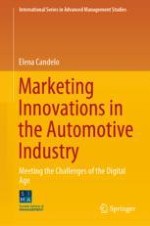2019 | OriginalPaper | Buchkapitel
19. Towards the 2030s: Unusual Times Call for Unusual Strategies
verfasst von : Elena Candelo
Erschienen in: Marketing Innovations in the Automotive Industry
Aktivieren Sie unsere intelligente Suche, um passende Fachinhalte oder Patente zu finden.
Wählen Sie Textabschnitte aus um mit Künstlicher Intelligenz passenden Patente zu finden. powered by
Markieren Sie Textabschnitte, um KI-gestützt weitere passende Inhalte zu finden. powered by
